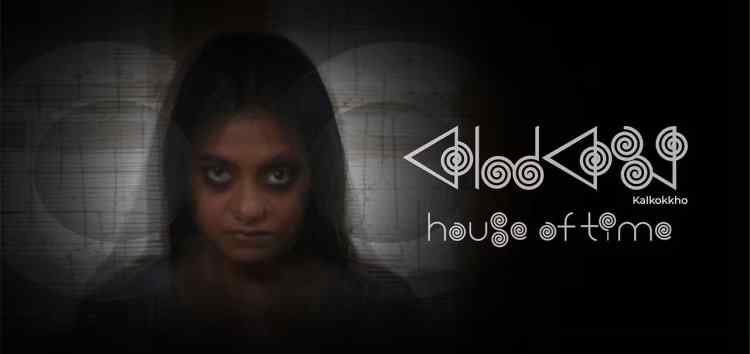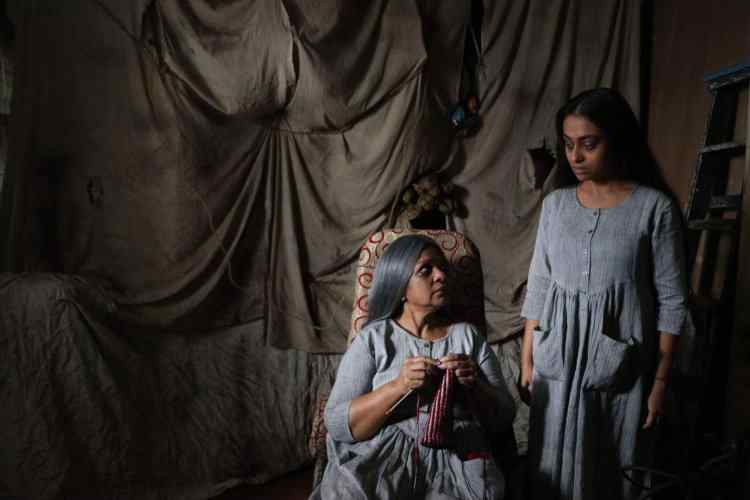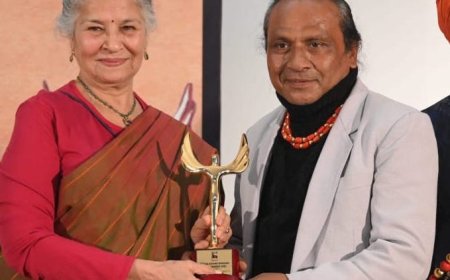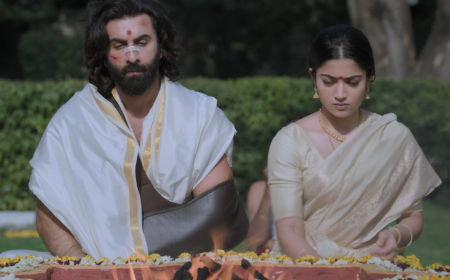Film Review: KAALKOKHHO – HOUSE OF TIME
In an in-depth study carried out by Dr. Shoma A. Chatterji, the Bengali film KAALKOKHHO, which was honoured with the prestigious National Award for the Best Bengali Feature Film at the 69th National Film Awards, was thoroughly analysed.

Kaalkokhho marks the directorial debut in the feature film category by director duo Rajdeep Paul and Sarmistha Maiti, both alumni of Satyajit Ray Film & Television Institute. Kaalkokhho or, House of Time has won the National Award for the Best Bengali film at the recently concluded National awards. This is one of the most challenging films to lend itself to a review or a critique I have done over the past four decades. Because it is not just a niche film. It is a niche-niche film which suggests that it needs repeat viewing to even try and understand what the directors wish to say.
“House of Time” is the English translation which however, does not quite do justice to the idea and conception that produced the film. The narrative deals with the extreme impact the COVID-19 pandemic has on the lives of three women and a doctor who are trapped in a strange time-space prison which is so powerful a trap that the three females of three different ages comprised of an elderly woman, her daughter, her small grand-daughter and the doctor they kidnap and keep captive find it almost impossible to find an exit from.

Image: film still. Photo Courtesy: Aurora Films
The narrative, whatever little the viewer can capture of it, is set when the COVID-19 pandemic was at its extreme peak with everyone running scared for their lives of falling victim to the pandemic. It is not an abstract film. It does have a narrative which is very strange and confusing at the same time. But it also points out how it began to work negatively and destructively on the mindsets of these three females of three different ages whose lives are caught constantly in a time trap throwing them into a constant state of fear of death that not only makes them repeat boring and intriguing chores round the clock but also turns them into abductors, torturers and abusers of the very doctor they have forcibly abducted to guarantee their own safety from falling victim to the pandemic.
An educated doctor out on his morning walk, is suddenly stopped by a young woman who requests him to accompany her to their home to treat a member of her family who is sick. The doctor refuses. He suddenly wakes up in a strange room and is captured by a strange fear when he finds his hands and feet tied to the bed he is lying on. From a proper form of dress, he is now wearing a striped sleeping suit which reminds us of the average prisoner’s uniform. He is given the same food to eat every single day and all his entreaties to the older two ladies fall on deaf ears.

Image: film still. Photo Courtesy: Aurora Films.
The wall clock shows 9.00 but whether it is morning or night we have no idea about as the lives of these four seem to be trapped within that fixed hour. The actions of the three females are so repetitive every single day that we not only lose track of the time as does the captive doctor but we also get extremely bored as it is difficult to discover why this is happening. The routine remains the same every single day. The doctor wakes up to find the senior most Mamoni seated on an easy chair knitting something and looking at him casting a scary look at him. The young Mamoni arrives and ties him up before and after meals. The small Mamoni does some drawings in a book and keeps narrating the very same story that appears to have a symbolic relationship with the film’s narrative.
The outside world is represented in two ways – one, a small boy who flies a kite that can be seen from the window and who appears to be friends with the little Mamoni. Mamoni keeps asking him why he has not gone to school and he tells her that his school is closed. He adds that he is not taking precautions against the pandemic as it only happens to the rich and not to the poor. In the evenings, the three ladies repair to a room upstairs to chant prayers together and offer incense sticks and lamps to three Goddesses on a raised altar. The doctor is the lone observer who feels something is quite wrong with these three females but cannot solve the riddle.
The second way is a video conversation that happens between the young woman and a young man through her cell phone. The young man can be seen working in a morgue with dead bodies presumably working with the dead bodies of Covid victims. He is a migrant but he cannot come back. Slowly, the conversations stop and one guesses that he too, may have fallen victim to the pandemic.
Suddenly once, the young Mamoni forces herself on the doctor and has sex with him but he is scared by this behaviour. The only breaks to this boring time-space cycle is when the oldest Mamoni has breathing troubles but no one listens to the doctor’s pleas to take her to a hospital. Then, when she recovers, it is the small girl’s turn to fall sick. The doctor tries his best within his limited resources drawn from a medical box the three women have kept in their strange home. Both of them recover only to get back to their rather scary routine. Till, one fine morning, the doctor mysteriously finds himself in open space, away from that terrible prison, walking away. A young woman approaches him with the same request that was earlier made by the other woman. The doctor refuses to begin with, but then beckons to her and walks towards her to disappear through a path between the trees. The film closes on this uncertain note of despair, disillusionment and depression.
This strange film confuses more than it explains or clarifies, because it only shows, the same cycle again and again and again, when the doctor finally tells them that breath- which causes COVID-19 - is not just poisonous that brings death but also brings life. Does he say this to appease their disturbed souls? Or does he say this to appease himself? Or, are the directors trying to get a message across to the audience? One has no certain knowledge and that is what the film itself aims at.
Does Time control our lives which at a point of time, we cannot manipulate to our satisfaction? Or, is Time a slave to human control and manipulation? These are the two main questions that spell out the philosophy. The directors have taken courage in their hands to actually bore and scare the audience into a state of mind that remains as confused in the end as it was when the narrative opened. The cinematography is as dark and as depressing at the film itself. So is the repetitive editing where the scenes are repeated again and again between nine in the morning till nine the next morning. This brings across a feeling of suffocation right through the film. It is a tangle feeling that spreads right across the film. The art direction reflects the terrible state of the flat in which the three females live a boring, scary and strange life. The acting credits go mainly to the young woman who exudes an air of danger and fear with her long hair, her large eyes, the long hair left loose and hanging, sometimes very scary, sometimes mysterious, even dangerous. These three actors mostly look directly into the movie camera, creating a diegetic relationship between the characters and the audience.
The question that the film shakes us into asking ourselves is – is this time-space trap limited to the COVID-19 situation alone? Or, is it present at normal times also but we do not notice it because life keeps us busy with the struggle of living, loving and dying? And in the midst of this struggle, we are never made aware that we are all slaves to Time and it is not the other way round. Time cannot be boxed within hours, minutes, days and months though humans have tried to box it according to their own convenience. Kaalkokhho is a film that can be taken as a warning for all of us.
***
What's Your Reaction?



































































